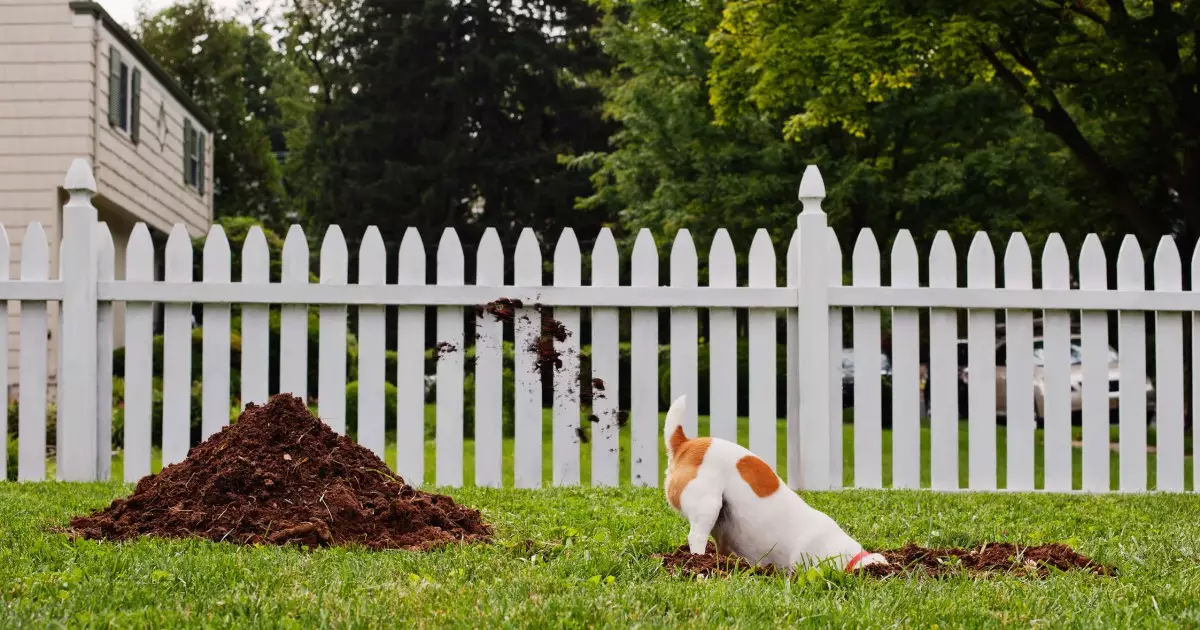Observing a dog engaging in the act of digging can evoke a range of responses, from amusement to concern. This instinctual behavior has intrigued pet owners and animal behaviorists alike. Whether it’s a gentle scratching at the dirt or vigorous tunneling, there is an undeniable skill involved that leaves us in awe. But what drives this behavior? Understanding the underpinning factors and identifying which breeds tend to dig more frequently is essential for any dog owner looking to foster a happy environment for their furry companions.
Digging is not merely a quirky habit adopted by domesticated dogs; it is a behavior deeply rooted in their ancestral instincts. In the wild, the act of digging serves several critical purposes, including the creation of a comfortable den. This instinct helps canines find warmth in cold weather or coolness in the heat. Even house dogs exhibit this behavior, often “digging” into carpets or blankets to create a cozy sleeping area. Recognizing these evolutionary factors can help owners understand their dogs better, especially when the animals scratch at the ground or other surfaces.
Another compelling reason for digging lies in the search for food. In nature, many animals dig to unearth tasty roots or hidden prey, providing both sustenance and amusement. Dogs, particularly those that have their meals provided regularly, may dig out of sheer boredom or as a form of playfulness. A lack of stimulation can turn a dog’s world gray and lead them to seek entertainment in less desirable ways, such as pawing at the earth. This behavior can be particularly pronounced in certain breeds that have been bred for specific work or tasks.
Various breeds showcase a strong inclination toward digging. Terriers, often esteemed for their strong prey drive, were historically bred to hunt underground animals like moles and gophers. Their genetic makeup inclines them to pursue and burrow, making them impressive diggers. Additionally, breeds such as Huskies, Malamutes, and other dog types adapted to colder climates may dig to find cooler resting spots during hot days. Understanding these breed characteristics helps owners develop strategies to channel this behavior positively.
It’s essential to acknowledge that an environment lacking adequate stimulation can exacerbate digging tendencies. Dogs like Shelties and Border Collies require ample mental exercise, as they are naturally active and intelligent. Insufficient interaction or engagement can lead them to express their pent-up energy through destructive behaviors, including digging. Furthermore, under-socialized dogs or those battling separation anxiety may dig as an outlet for their distress.
To mitigate unwanted digging, dog owners can employ several strategies. Creating a designated digging area in a garden or yard can serve as an effective outlet. Filling this spot with soft soil and burying toys or treats could turn digging into a fun and rewarding activity. Additionally, understanding and respecting the natural desire to dig and hunt can provide valuable insight into how to communicate better with your pet.
When considering solutions, spaying or neutering is paramount. Statistics demonstrate that unaltered males exhibit a greater tendency to escape their enclosures—often driven by the search for mates. Ensuring that pets are spayed or neutered not only contributes to population control but also promotes a more placid and settled home life for dogs.
While digging can be seen as a nuisance, it is also a profound expression of a dog’s instinctual behavior. By understanding the reasons behind this activity and recognizing which breeds are more predisposed to it, owners can provide environments that celebrate their pets’ quirks. Through positive reinforcement and structured environments, owners can allow their canine companions to express their natural behaviors in constructive ways, leading to happier and well-adjusted pets. Embracing these instincts rather than combating them can significantly improve the human-animal bond and enhance the overall quality of life for our furry friends.

